QR codes in print media connect physical paper to digital experiences and open up a world of possibilities. By embedding these codes in newspapers, magazines, and other printed materials, businesses can easily drive traffic to their websites, promote special offers, and even track user engagement.
Integrating QR codes into newspapers and magazines is more than just a trend; it's a strategic approach to keeping print media relevant in the digital age.
By scanning these codes, readers can access video content, participate in surveys, or visit social media pages, making the reading experience interactive and dynamic.
Let's explore how it works!
Importance and Utilization of QR Codes in Print Advertising

Using QR codes in print media is about more than just linking to a website. It’s about creating a cohesive journey for the reader, from the tactile experience of flipping through pages to the digital exploration of additional content.
It's an opportunity to drive specific actions, such as newsletter sign-ups, product purchases, or social media interactions, effectively turning a static ad into an interactive experience.
The digital age has brought about significant changes in advertising, and QR codes are at the forefront of this transformation. These versatile tools have become crucial in print advertising, offering unique opportunities for brands to engage with their audience.
The Advent and Significance of QR Codes in Print Advertisements
QR codes have been around since the 1990s, but their significance in print advertising has skyrocketed recently. This rise can be attributed to the ubiquitous nature of smartphones and the increasing demand for interactive and convenient user experiences.
By simply scanning a QR code with a smartphone, consumers can access a wealth of information - from product details to exclusive offers. This seamless integration of print and digital media not only enhances the user experience but also provides marketers with valuable data on consumer behavior and preferences.
Instant Access to Digital Content Using QR Codes
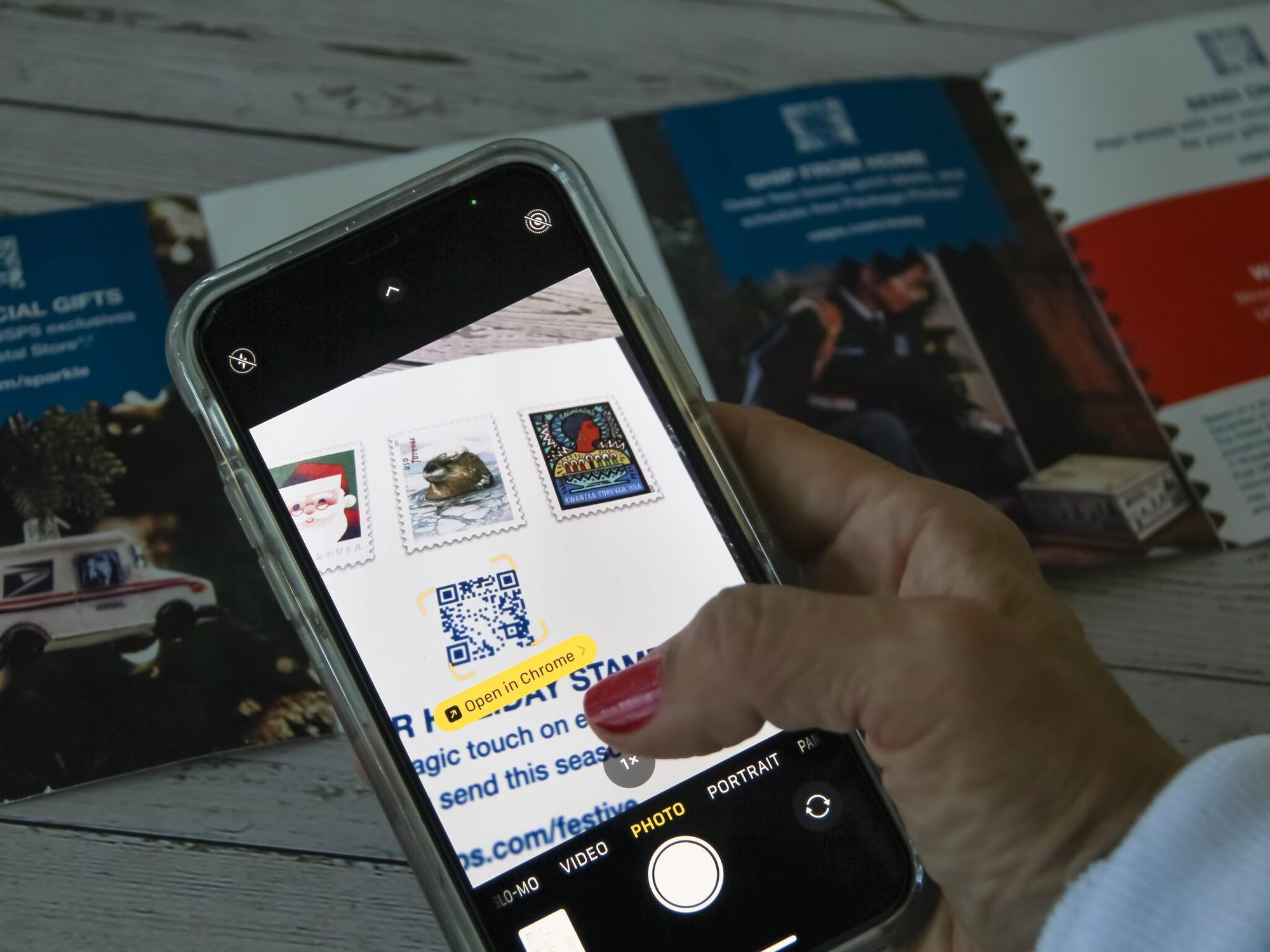
One of the primary benefits of using QR codes in print advertising is the instant access they provide to digital content.
Imagine a potential customer reading a magazine and coming across an ad for a new product. Instead of having to manually search for the product online, they can scan the QR code and be taken directly to a webpage with more information or even a purchase link.
This immediacy not only simplifies the customer's journey but also increases the likelihood of conversion, as the process involves fewer steps and less effort.
Engaging Audience Interactions Through QR Codes
QR codes open up a new realm of audience engagement. They can be used to direct customers to a product video demonstration, a survey to gather feedback, or a social media contest.
This level of interaction fosters a deeper connection between the brand and the consumer. It transforms the passive act of viewing an advertisement into an active and engaging experience.
Furthermore, these interactions provide valuable insights into customer preferences and behaviors, which can be leveraged to tailor future marketing strategies.
Overcoming Advertising Space Limitations with QR Codes
In the world of print advertising, space is a premium commodity. Advertisers often struggle with the constraints of limited space, trying to convey their message effectively without cluttering the ad. QR codes emerge as a game-changer in this scenario, offering a unique solution to space limitations.
Leverage QR Codes to Overcome Print Ad Restrictions
QR codes are incredibly efficient in maximizing the use of limited space in print advertisements.
Instead of cramming lots of text and images into a small ad, you can include a QR code that leads to a webpage with extensive information. This approach not only declutters your ad but also adds an element of curiosity.
When readers scan the QR code, they are taken on a journey beyond the confines of the physical ad space to a digital realm where there's no limit to the amount of content you can share.
Analyzing the Flexibility of QR Codes in Advertising
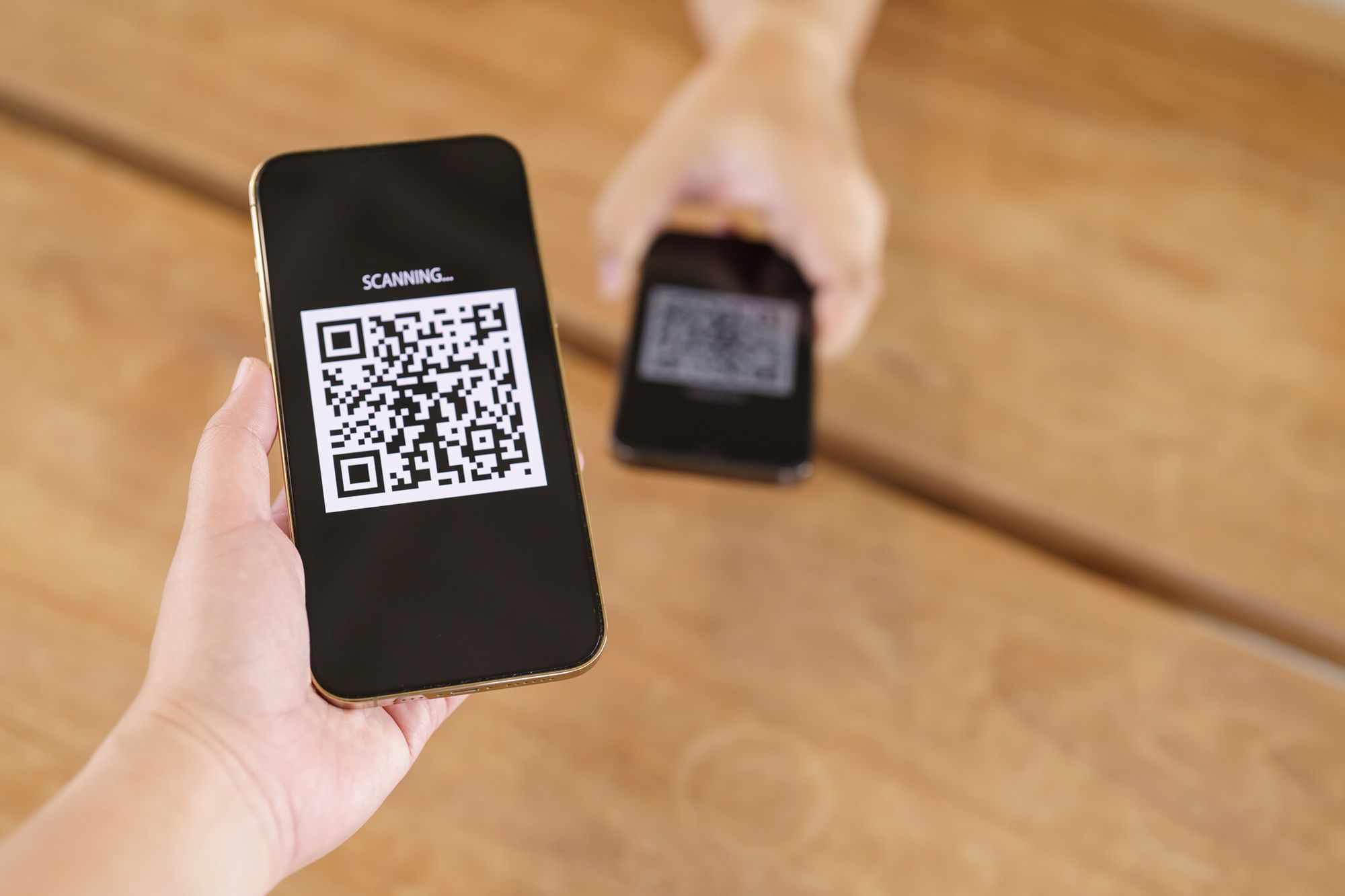
The flexibility of QR codes in advertising is unparalleled. They can adapt to various sizes and formats, making them suitable for different types of print media – from large posters to small business cards.
This adaptability extends to the type of content they can link to. Whether it’s a detailed product catalog, a promotional video, or an interactive website, QR codes can connect your audience to diverse types of digital content, all from a small square in your print ad.
Furthermore, QR codes can be customized to fit the aesthetic of your brand. You're not stuck with the standard black-and-white look; QR codes can incorporate colors, logos, and even unique shapes. This customization not only makes your ad visually appealing but also helps reinforce brand identity.
How to Optimize QR Code Usage in Print Advertising
Incorporating QR codes into print advertising is a smart strategy, but optimizing their usage for maximum impact is crucial. Here are some key considerations to ensure your QR codes not only attract attention but also provide value to your audience.
Ensuring Scannability of the QR Code
The primary goal of using a QR code is to make it easy for your audience to access digital content. To ensure scannability:
- Size: The QR code should be large enough to easily scan. A general rule of thumb is that the scanning distance is ten times the width of the QR code.
- High Contrast: Use high contrast colors for the QR code against its background, typically black on white, to ensure it can be scanned under various lighting conditions.
- Clear Space: Maintain clear space, or 'quiet zone,' around the QR code. This should be at least the size of one module (the smallest square in the QR code) all around it.
Importance of Calls to Action in QR Codes
A QR code itself doesn't compel action; the messaging around it does. Include a clear call to action (CTA) near your QR code. This can be something like "Scan for a Surprise Discount!" or "Scan to Learn More About Our Eco-friendly Practices." A compelling CTA gives your audience a reason to scan the QR code.
Customizing QR Code Design to Match Brand Aesthetics
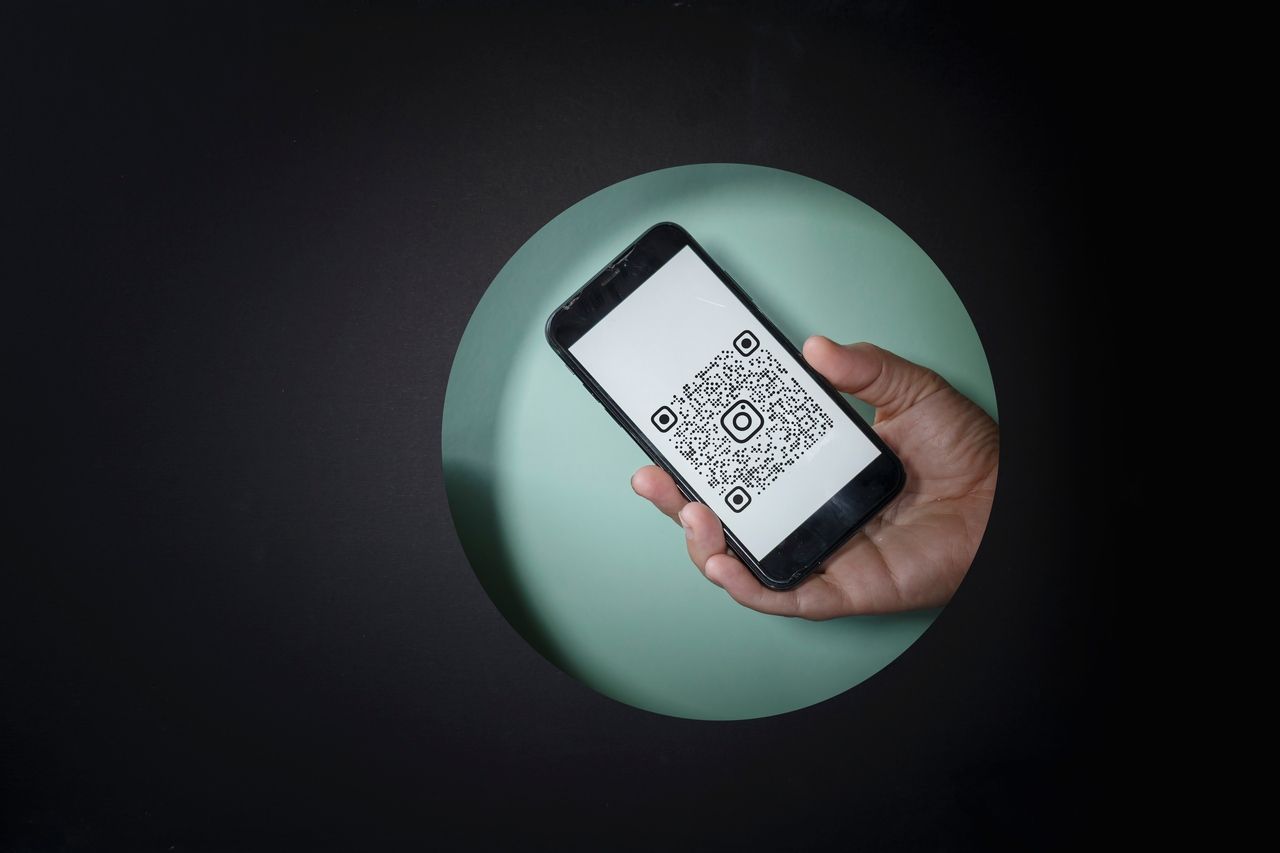
Customizing your QR code to align with your brand's aesthetic enhances brand recognition and can make your ad more visually appealing. This can include:
- Color Matching: Adjust the color of your QR code to match your brand’s color palette.
- Incorporating Logos: You can place a small logo in the center of the QR code, ensuring it doesn't hinder scannability.
- Creative Designs: Experiment with the shape and design of the QR code while keeping it functional.
Ensuring Mobile-Friendly Content in QR Codes
Once a user scans your QR code, they should be directed to mobile-friendly content. This includes:
- Responsive Design: Ensure the webpage linked to the QR code is optimized for mobile devices.
- Loading Speed: Optimize for quick loading times. Users may lose interest if the linked content takes too long to load.
- Relevant Content: The content should be relevant and add value. For example, if your ad is for a product, the QR code should lead to a page where users can learn more about the product or make a purchase.
Choosing a Reliable QR Code Generator
Select a QR code generator that offers:
- Customization Options: Look for tools that allow customization in line with your brand identity.
- Tracking and Analytics: Choose a generator that provides data on how many times the QR code was scanned, when, and where to measure the effectiveness of your campaign.
- Dynamic QR Codes allow you to change the linked URL without changing the QR code itself, which is particularly useful for long-term or rotating campaigns.
You can use QRCodeDynamic to create customizable dynamic QR codes.
Creating a QR Code for Print Media: A Step-by-Step Guide
Integrating QR codes into your print media strategy can seem daunting but quite straightforward. Follow these steps to create a QR code that looks great and enhances your print advertising effectiveness.
Input the Desired Content for the QR Code
The first step in creating a QR code is deciding what content it will link to. This could be a URL, a text message, or even a Vcard. Consider the end goal of your QR code:
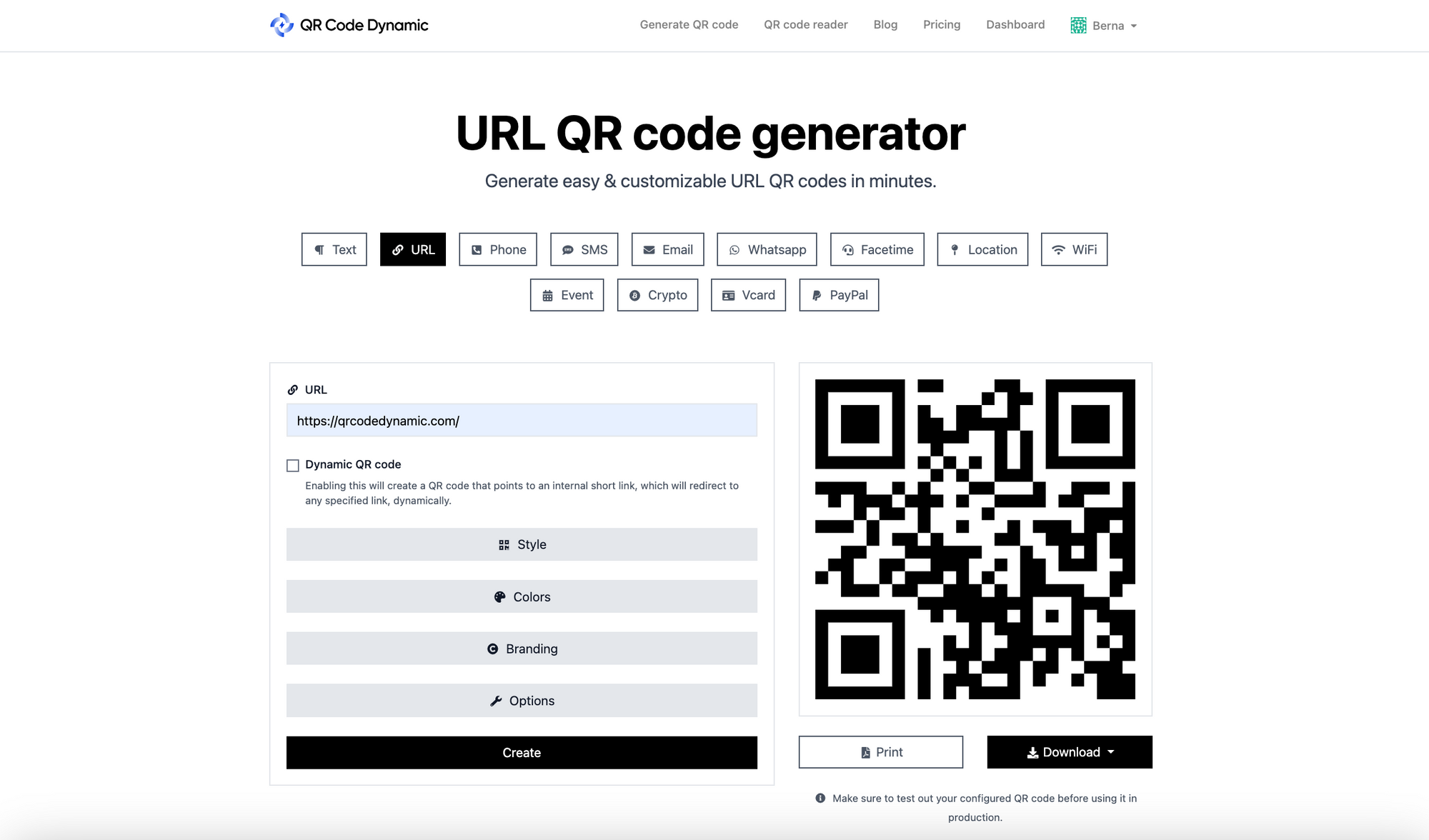
- For Directing to a Web Page: Ensure the URL is correct and leads to a mobile-friendly site.
- For Promotional Content: If it's for a special offer or coupon, make sure the details are clear and concise.
- For Contact Information: For Vcards, double-check all contact details are accurate.
Personalizing Your QR Code to Align with Company Brand
Once you know what your QR code will contain, it's time to personalize it. This step is crucial for maintaining brand consistency:
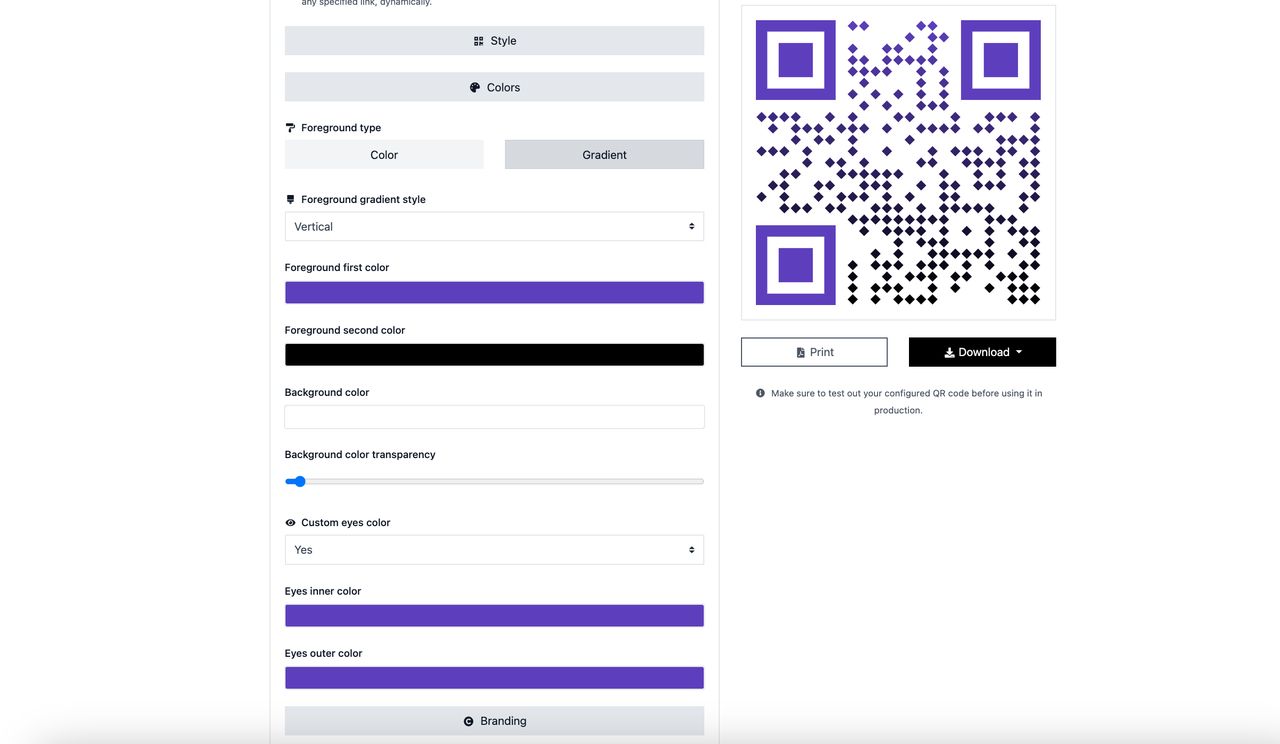
- Choose Colors: Select colors that match your brand's color scheme. However, ensure there is sufficient contrast between the QR code and its background.
- Add Logo: If possible, incorporate your company logo into the design of the QR code. This makes your QR code stand out and reinforces brand recognition.
- Customize Design: Some QR code generators allow you to alter the shape of the QR code’s pixels (or “modules”) to create a unique look.
Testing the Functionality of Your QR Code
Before printing thousands of copies, it's essential to test your QR code:
- Use Multiple Devices: Scan the QR code with different smartphones and QR code scanning apps to ensure it works universally.
- Check Loading Times: Confirm that the linked content loads quickly and correctly on various devices.
- Verify Content Accuracy: Make sure the QR code directs to the intended content and all details are correct.
Downloading and Incorporating the QR Code into Print Designs
Once tested, download your QR code in the highest resolution, usually in formats like PNG or SVG. When incorporating it into your print design:
- Consider Placement: The QR code should be placed where it’s easily noticeable without interrupting the flow of your design.
- Size Appropriately: Remember the scanning distance guideline – the QR code should be large enough to be scanned from a reasonable distance.
- Provide Context: Include a brief instruction or call to action, indicating what the reader will gain by scanning the QR code.
Ensuring Your Printed Materials are QR-Compatible
Finally, when printing your material with the QR code:
- Use High-Quality Printing: Ensure the print quality is high and the QR code is clear and scannable.
- Consider the Material: Some materials or finishes can interfere with the scannability of QR codes. Avoid overly glossy papers that might cause glare.
- Test a Print Sample: Before going for a mass print, test scan a printed sample to ensure everything works as expected.
Maximizing the Efficacy of QR Codes in Print Media
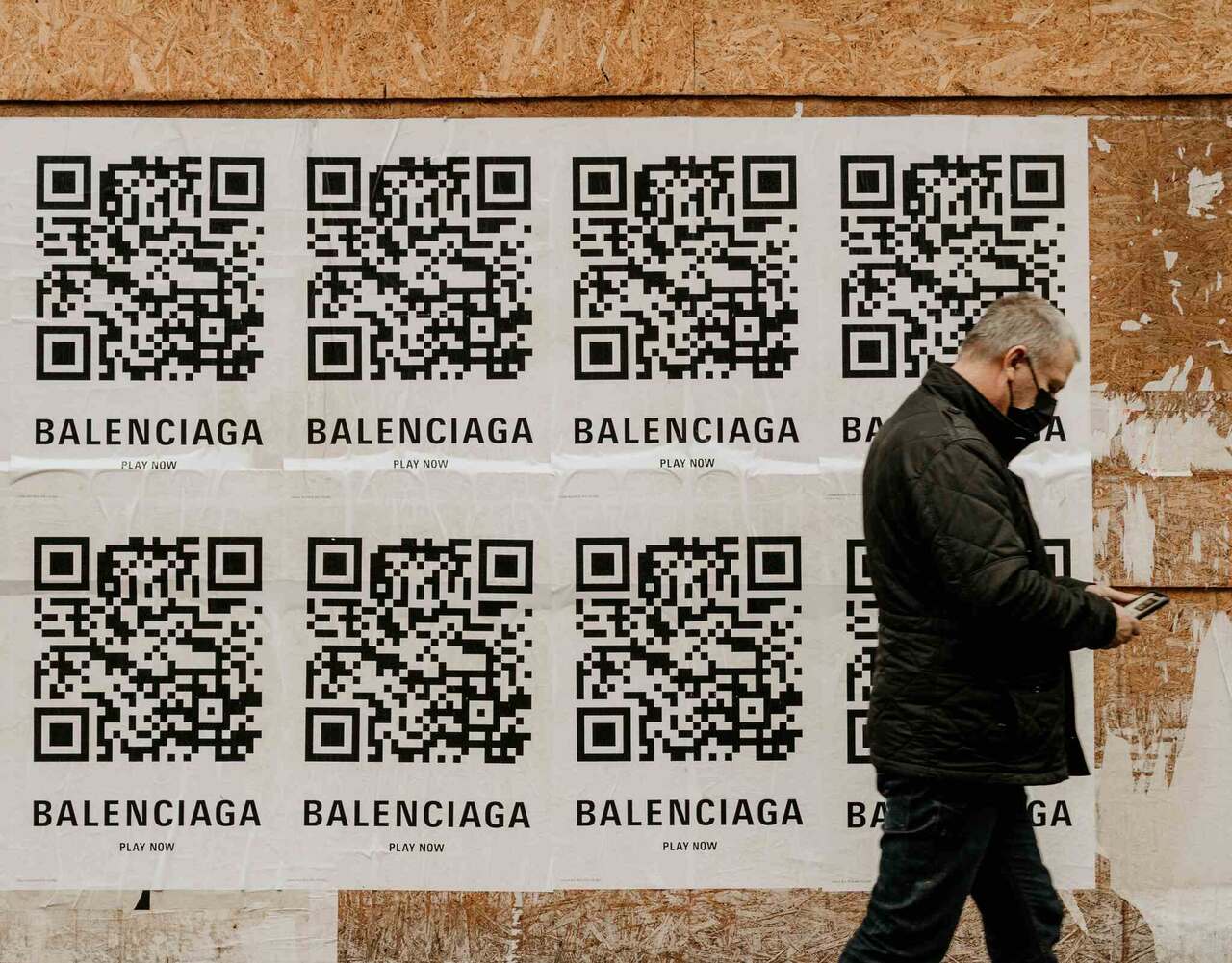
To truly leverage the power of QR codes in your print media campaigns, it's not enough to just create and place them—you need to maximize their efficacy. Here are some key strategies to ensure your QR codes are as effective as possible.
Designing the QR Code for Optimal Results
The design of your QR code can significantly impact its effectiveness. Keep these tips in mind:
- Visibility is Key: Make sure your QR code stands out without overpowering the main message of your ad. It should be easy to find and recognize.
- Match it with Your Brand: Customizing your QR code to align with your brand identity helps maintain a consistent brand experience.
- Keep it Simple: While customization is great, don’t overdo it. The QR code should remain easy to scan.
Regularly Updating Campaign Details
QR codes offer a unique opportunity for dynamic content:
- Stay Current: Use dynamic QR codes to update the linked content without needing to change the QR code itself. This is especially useful for seasonal promotions or rotating special offers.
- Keep it Relevant: Regularly check and update the content your QR code links to, ensuring it's always relevant and offers value to your audience.
Leveraging QR Codes as Cost-Effective Tools in Advertising
QR codes are not only effective but also cost-efficient:
- Multi-purpose Use: A single QR code in your print ad can link to various content, from videos to sign-up pages, saving you the cost of creating different ads for different purposes.
- Trackable Metrics: Use the analytics from QR code scans to gain insights into customer behavior and preferences, which can inform your future marketing strategies, thus optimizing your advertising budget.
Guidelines to Follow When Printing QR Codes for Advertising
Printing QR codes for advertising requires attention to detail to ensure their effectiveness. Here are some guidelines to help you make the most out of your QR codes in print advertising.
Right-Sizing Your QR Code
Size plays a critical role in the effectiveness of a QR code:
- Find the Right Balance: The QR code should be large enough to be easily scannable but not so large that it dominates your ad. A size of about 1 x 1 inch (2.5 x 2.5 cm) is typically effective for most print ads.
- Consider Distance: The ideal size also depends on how far the reader will be from the code. For example, billboard QR codes must be much larger than those in a magazine.
Choosing High-Quality Printers and Ink
The quality of printing can greatly affect the scannability of QR codes:
- Use High-Resolution Printing: Ensure your QR codes are high resolution to prevent any blurring that could make them unscannable.
- Quality Ink Matters: Use high-quality ink to avoid fading or smearing, which can render QR codes useless.
Considering Your Printing Material
The material on which the QR code is printed can impact its functionality:
- Avoid Reflective Surfaces: Highly glossy paper can cause glare, making it difficult for QR code scanners to read the code.
- Texture Considerations: Extremely textured surfaces can distort the QR code. Opt for smoother surfaces for best results.
Ensuring Scanability of QR Code Despite Material Damage

QR codes in print ads can be subject to wear and tear, so it's important to consider durability:
- Location Matters: Place QR codes in areas less likely to be damaged or worn out, like the center of a page rather than the edge.
- Protective Coating: Consider using a protective coating to prevent damage to the QR code, especially if the print material will be handled frequently or exposed to the elements.
Conclusion
In this digital era, QR codes in print media represent a unique and powerful tool for bridging the gap between physical and digital advertising.
They offer a cost-effective, engaging, and interactive way to enhance your marketing strategies. By following the guidelines and tips, you can effectively integrate QR codes into your print advertisements, ensuring they are eye-catching and highly functional.
Embrace the power of QR codes and watch as they transform your print media campaigns into dynamic, interactive experiences that resonate with your audience.
Check out these blog posts before leaving:


